Nigerian dwarf goats are an ideal livestock to keep on homesteads both large and small. A small stature or “mini goat” of this type can even be kept on a suburban homestead, using a dog box as a shelter and the fenced-in backyard as its home.
Simply because Nigerian dwarf goats are easy keepers on a small homestead, that does not mean homesteaders on large acreage could not benefit from these miniature goats as well.
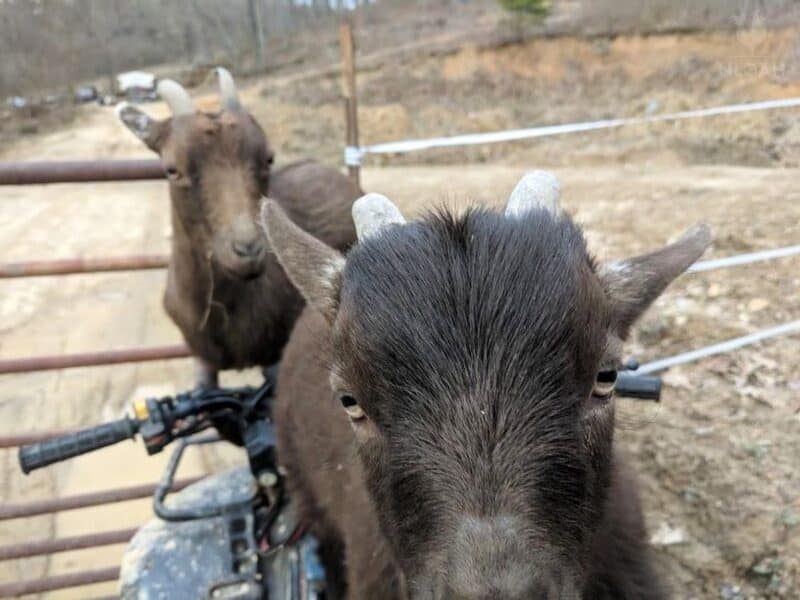
Both Nigerian dwarf goats and their “cousins,” pygmy goats, are highly beneficial and low-maintenance animals that clear tons of brush, in addition to being quality dairy and meat producers.
Table of Contents:
Nigerian Goat History
These miniature goats first arrived in America during the 1950s by a dairy farmer from West Africa. The goats made the journey over on the ship basically as feeder animals for the big cats that were being transported to several zoos in the United States.
The goats that were not fed to the big cats by the time they were transported to all of the zoos, were left behind as an added bonus, and soon-to-be popular little attractions. Most of the Nigerian dwarf goats found new homes at the Gladys Porter Zoo located in Brownsville, Texas.
All of the goats left at the zoo were then referred to as Pygmy goats. But, after a few years of growing, zookeepers noticed only some of the now mature goats developed a stocky body style common to meat goat breeds, and others remained slender and took on traditional dairy goat characteristics.
The goats that resemble dairy goats more closely were then deemed to be Nigerian dwarf goats and cultivated by breeders to expand upon their milking abilities and physique.
Sharla Parker of Willows farm and Kathleen Clapp of Goodwood Farms have been credited with the development of the Nigerian dwarf goat breed.
The names of these women and the Gladys Porter Zoo after noted in the pedigrees of top quality Nigerian dwarf goats that can trace their heritage back to the first boat trip to Texas.
Nigerian Goat Facts
| Scientific name | Capra aegagrus hircus |
| Lifespan | 15 years |
| Weight | 50 to 80 pounds (22 to 36 kilograms) |
| Males Height | 2 feet (or 24 inches, 61 centimeters) |
| Females Height | 22 inches (56 centimeters) |
| Temperament | calm and friendly |
| Age of sexual maturity for males | 3 – 4 months old |
| Age of sexual maturity for females | 7 – 8 months old |
- Nigerian goats hail from West and Central Africa.
- Nigerian dwarf goats have coats that come in a variety of colors, although black or brown hair tends to be the most common.
- This small-stature goat breed does not typically reach maturity until it is 24 months old.
- A Nigerian goat weighs in at about 50 to 80 pounds (22 to 36 kilograms) once it reaches maturity – with very little size difference between males and females. Billy goats (intact males) do tend to weigh slightly more than wethers – or castrated males.
- Goats of this breed usually have a butcher weight of approximately 25 to 40 pounds (11 to 18 kilograms).
- These miniature goats are hardy animals and can not just survive, but thrive in nearly any type of climate.
Nigerian Goat Personality
These little goats are widely renowned for their gentle nature and even temper. Nigerian goats are often so friendly they have been tapped to become companion animals.
It is becoming more common to see miniature goats among the animals taken to nursing homes, veteran facilities, and hospitals to raise the spirits of the patients or residents staying at the facilities.
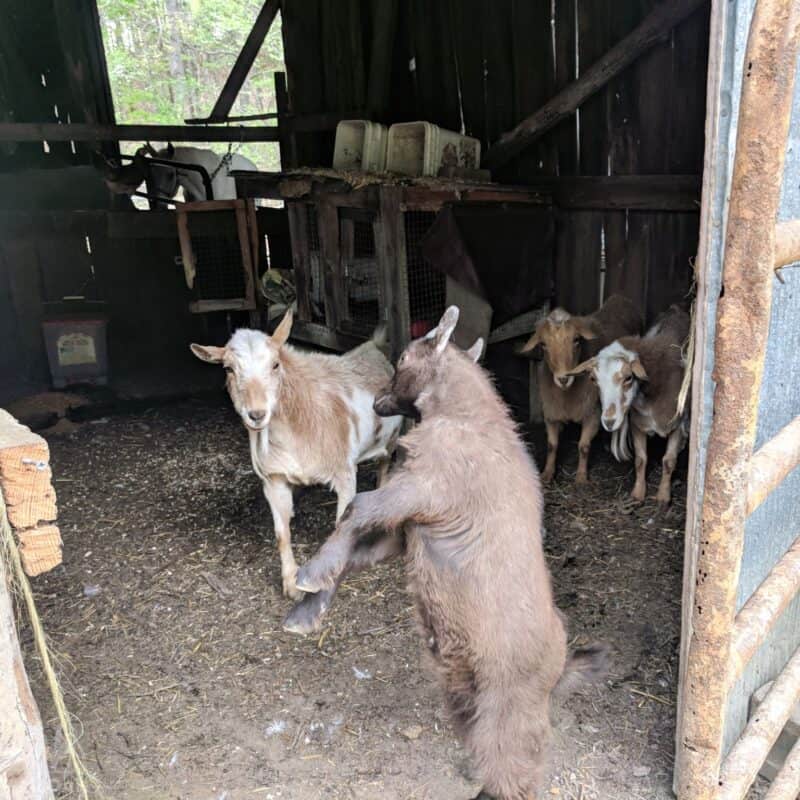
The United States Department of Agriculture has classified the Nigerian dwarf goat as a certified livestock dairy goat breed. This designation makes these mini goats eligible for keeping by both 4-H and FFA (Future Farmers of America) club members.
Due to their small stature, easy to control demeanor, and kind nature, Nigerian dwarf goats are common sights at county fairs around the United States. Even the youngest of 4-H club members are typically able to raise, control, and show these goats.
Like all other goat breeds, Nigerian dwarf goats are herd animals. They will not do well alone and need at least one other animal as a companion. Goats of this breed also make great companions for aging horses, llamas, and sheep.
Both Nigerian dwarf and Pygmy goats are often kept with miniature donkeys either as companion animals or for the protection the little donkey offer from coyotes – they LOVE to kick and chase coyotes.
Even you will not need a large browsing area for the goats to keep them content.
Nigerian Goat Advantages and Disadvantages
This goat breed is known as a dairy breed. Nannies produce incredibly sweet milk that is often able to be consumed by folks who have an intolerance to cow’s milk.
Nigerian dwarf goats, despite their small size, are capable of producing roughly a half gallon of milk daily. The milk produced has a higher butterfat content than other breeds of goats.
The milk garnered from lactating Nigerian dwarf nanny goats also has a higher protein content than milk produced by other goat breeds.
While a standard-sized dairy goat is capable of producing a larger quantity of milk each day, they cost more to purchase, more to feed, require a larger habitat – and their milk is sometimes not as sweet.
Nigerian Dwarf Goat Care
Although you don’t need a ton of room to roam to offer a Nigerian dwarf goat a suitable home, they are truly high energy animals. If you free-range your goats on a large homestead with varying terrain, the goat herd will find plenty of ways to entertain themselves.
But, if you keep the goats in a pen or small space, they will require ramps, stumps, and other climbing structures and tunnels to entertain themselves. A bored goat will quickly become a destructive and sometimes aggressive, goat.
These miniature goats need the same basic grain feed, roughage, water, mineral supplements, shelter, and shots as all other goat breeds.
The one big advantage of keeping Nigerian dwarf goats from a habitat perspective is the size of the fence you must erect to keep them in.
These goats will not be able to climb a fence that is taller than 2 to 2.5 feet tall – making fence purchasing less expensive and time-consuming.
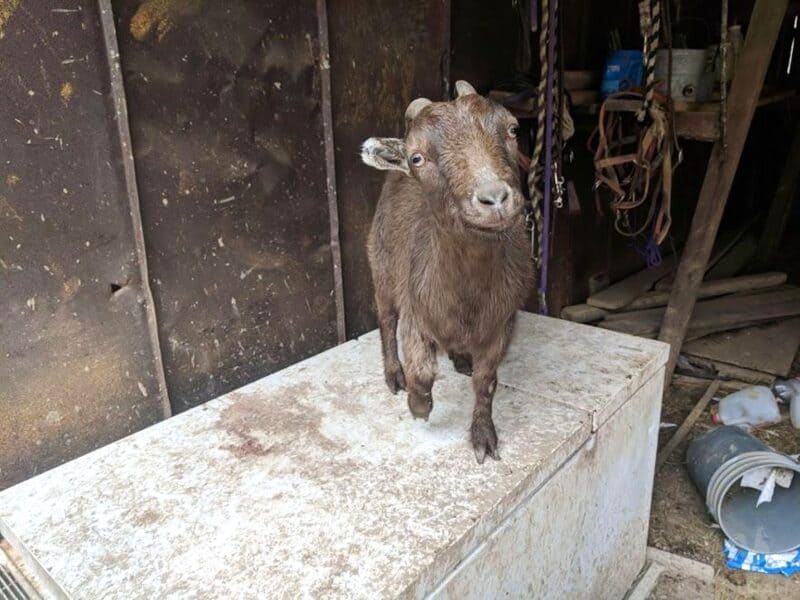
Health and Medical Concerns
Nigerian dwarf goats are an exceptionally healthy and hardy breed. Of the few diseases and medical conditions that typically could afflict this miniature goat breed, shots exist to prevent most of them.
When this mini goat breed is properly fed, housed, and wormed, they will not only be far more unlikely to contract a potentially severe disease but produce healthier kids, as well.
A Nigerian dwarf goat herd that is housed properly in a well-ventilated area will not likely contract pneumonia – a disease that goats are highly susceptible to regardless of breed.
Enterotoxemia and Bloat
The one goat health condition I have struggled the most with is enterotoxemia or overeating disease. Goats that either eat too much of the wrong things, too much of the right ones, or both can contract this potentially deadly disease.
My male goats have been far more likely to binge eat when browsing or run the rest of the herd off of their grain feed so they can devour an extra portion, far more than my female miniature goats of any age.
It is always best to provide hay only in the morning for the goat herd to eat. They will consume the most food when they are hungry after waking. Hay is the most natural food source for goats, and eating it as the staple of their diet will help keep their ruminen in check.
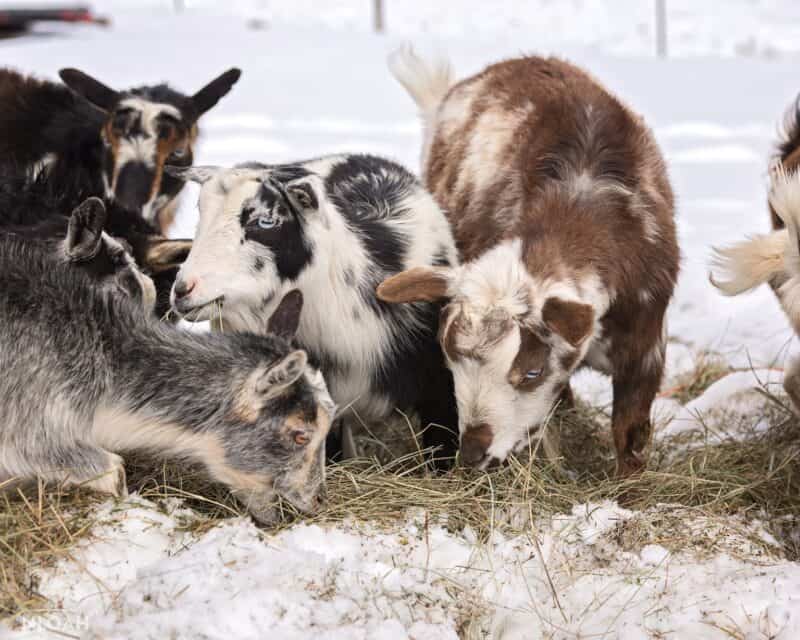
A goat that eats too much, especially of the wrong thing (like snacks given by well-intentioned keepers) can also contract another potentially deadly disease: bloat.
A goat with bloat will need to be given a drenching formula and have the sides (and only the sides) of its belly gently rubbed to help break up the hard and large gas bubble that has caused it to swell.
If the pressure is not released significant damage or bursting of internal organs and ruination of the kidneys can often occur. Keeping baking soda as a constant free choice snack in a goat feeder may also help prevent and treat bloat.
Enterotoxemia can help protect a goat from overeating and the ill effects of such a condition. An annual booster shot of the Clostridium perfrinigens CD toxoid shot may also help prevent some diseases.
Worms and Parasites
Worms are a constant problem for a myriad of barnyard critters, including Nigerian dwarf goats. If goats are kept in a pen or small browsing area, and are not allowed to free range, the chances of contracting worms increase.
The constant exposure to their own droppings – which will often be found inside a water bucket or feed trough, will spread the worms from the infested goat to others who use the same feeder or waterer.
Droppings in pasture and pen areas do not have a minimum of three days to dry up and die if the goats are not rotated out of the small space on a regular basis.
Even if you cannot enlarge or rotate the browsing area, there are steps you can take to reduce the chances of worms spreading throughout the herd of Nigerian dwarf goats.
First, do not use feed troughs. They sit too low to the ground and the goats like to play and sometimes, even sleep in them. Instead, use hanging feeders that can be lifted on and off of a board or gate rail for regular cleaning, and cannot be played in by the mini goats.
Waterers should also be either enclosed or hung on a board or gate – or both. Goats can easily be trained to use a nipple drip waterer that is often placed in hog pens.
My Nigerian dwarf goat herd waters in a free-flowing creek or a pond near the barnyard. Although some folks’ goats like to cool off or play in water, the opposite has been my experience.
My goat herd merely walks to the very edge of the water and then leaves the area after getting their fill – leaving no droppings in the water. The only time that I have to deal with water buckets and goat droppings is when I have a nanny and her kids in the nursing stall.
I use a thick rubber feed tub from Tractor Supply or Rural King that stands almost one foot tall. I place the tub on top of a pair of cinder blocks to elevate it high enough that the kids cannot mess around in or near it.
This doesn’t stop a nanny goat with poor aim from getting droppings into the water, unfortunately. To further reduce the chances of droppings I staple a section of hardware cloth around the lip of the rubber tub.
Once the hardware cloth is in place I cut out an opening just large enough for a single goat to get a drink at any one time – making sure to turn the cut metal inward and crimp it so no sharp edges are sticking out.
It is vital that you purchase the smallest gauge hardware cloth (rabbit hutch wire) that is available to prevent goat droppings from falling through the openings that span the width of the water tub.
You could also use hanging goat feeder tubs are mini waterers, but will have to refill them several times per day or fill multiple of the small tubs at one time.
I recommend worming the goats regularly as directed by the instructions on the worm pellet or liquid packaging. I also sprinkle diatomaceous earth (food grade only!) onto the all-stock grain in my feed tub so the goats get a dose of the natural wormer on a daily basis throughout the year.
You can also sprinkle the diatomaceous earth (DE) onto the goat and gently rub it in to help prevent and treat external parasites, like lice. The DE sticks to the bugs or worms and dries them out and kills them externally or has the same deadly impact if they are ingested but parasites and insect pests like flies.
Mastitis
This medical issue, also known as udder infection, impacts only lactating female goats. When mastitis occurs, a nanny’s teat openings refuse to close. Being in a state such as this all different types of debris can enter the teats and allow potentially deadly bacteria to grow.
When the nanny goat lays down on soiled hay or ground the chances of bacteria and foreign objects entering the open teats increase exponentially.
An infection that would require antibiotics often becomes necessary when a nanny goat contracts mastitis. Keeping bedding clean in the nursing stall and inspecting the teats after each milking, as well as gently cleansing them, can help prevent this condition from occurring.
Hoof Issues
Hooves will need to be trimmed about every six to eight weeks unless you free-range the Nigerian dwarf goat herd on terrain that includes rugged and rocky areas.
If you keep the goats in a pen or a small pasture area, including rocks and rough logs for the goats to climb upon and over, the need to trim hooves can be lessened.
It is not difficult to learn how to trim a goat’s hooves and the tools required to do so can be purchased for roughly $100 at agricultural supply stores. While the price varies by geographic area, it typically costs between $10 to $25 for a farrier to trim all of a single goat’s hooves.
The hooves should also be inspected on a weekly basis for any signs of chips, abscesses, or other damage that could cause a serious problem for the miniature goats.
Shots and Antibiotics
Many of the shots and antibiotics that you could need to treat your Nigerian goat herd are available over the counter at agricultural supply stores or from your local livestock vet.
Once you learn how to properly and safely give a shot to the goat, you are usually more comfortable and ready to do so in an emergency situation when waiting for a vet to arrive is not an option.
I always keep at least one bottle of livestock penicillin in my refrigerator to treat emergency situations – like a predator attack.
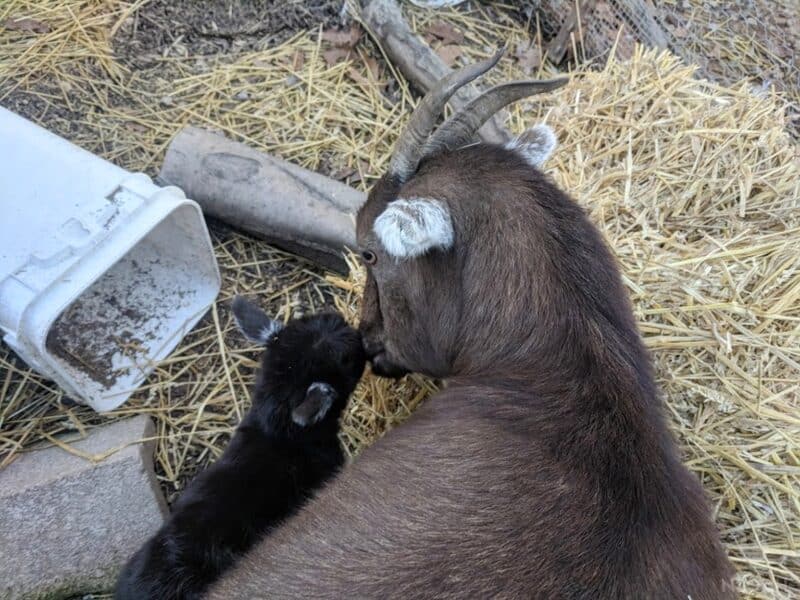
Nigerian Dwarf Goat Breeding
These miniature goats are up for breeding year-round. This can be both a good and a bad thing. If you have only one or even two nanny goats per buck, the females can become overwhelmed or injured through such repetitive breeding.
A poor quality, sickly, or deformed kid can also result when a nanny is bred too often or a doeling is bred at too young of an age.
The gestation period for Nigerian dwarf nanny goats is roughly 145 to 154 days. Goats often need help when kidding (delivering), but Nigerian goats tend to have fewer issues than others and often complete the process entirely on their own.
My nanny goats are Nigerian dwarf and Pygmy goat crosses. So far, they have always delivered entirely on their own without any human intervention, and always produced healthy kids.
During the first kidding the nanny will have one or two kids. Producing two kids during the first kidding is far more common with Nigerian dwarf nannies than any other breed.
During following kiddings, throwing twins is extremely common, but the nannies are also prone to having three or four kids at a time.
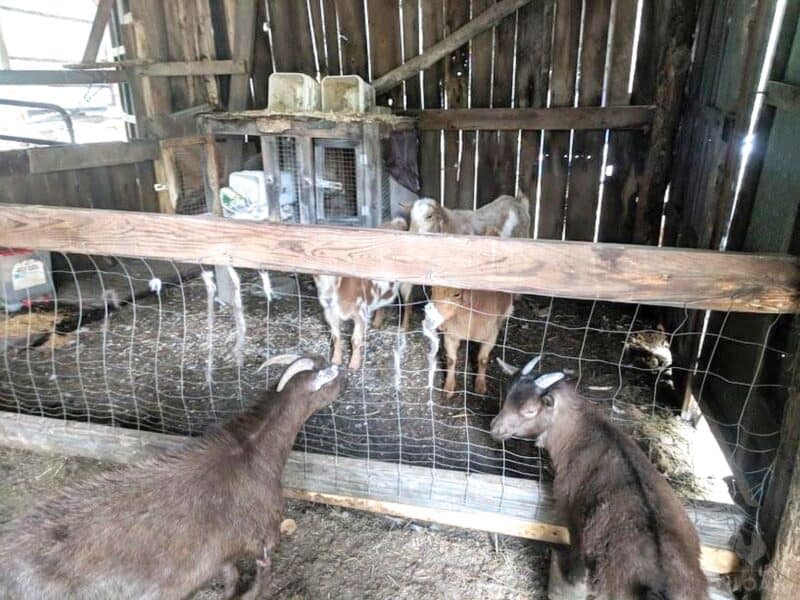
Nigerian Dwarf Goat Cost
How much a Nigerian dwarf goat costs depends on a host of variables, including your location, and the quality of the animal up for sale. If you are seeking a show quality goat or a proven breeder, the price tag will be a lot higher than a farm pet or brush-clearing quality goat.
The prices noted below are the average for my Appalachian region where Nigerian dwarf and pygmy goats, and crosses are common. Such availability is not routine in many parts of the United States, allowing breeders to charge a higher fee or resulting in having to ship the animal – which also increases the cost.
- A proven nanny who has kidded and produced milk for at least one season commonly ranges in price from $85 to $200.
- A young but already mating Billy goat that is not papered, sells for roughly $90 to $150.
- A doeling (young female that has not yet had kids) ranges in price from $100 to $175 – if she is not registered.
- A wether is the least expensive type of goat to purchase. They are sold for brush clearing, meat, or as companion animals only. Expect to pay $50 to $100 for an unregistered wether.
The American Livestock Breeds Conservancy has designated Nigerian dwarf goats to be rare. It can be difficult to find a full-blooded goat of this breed because they are so often cross-bred with Pygmy goats or Nubians in an effort to create a perfect multi-purpose dairy and meat goat.
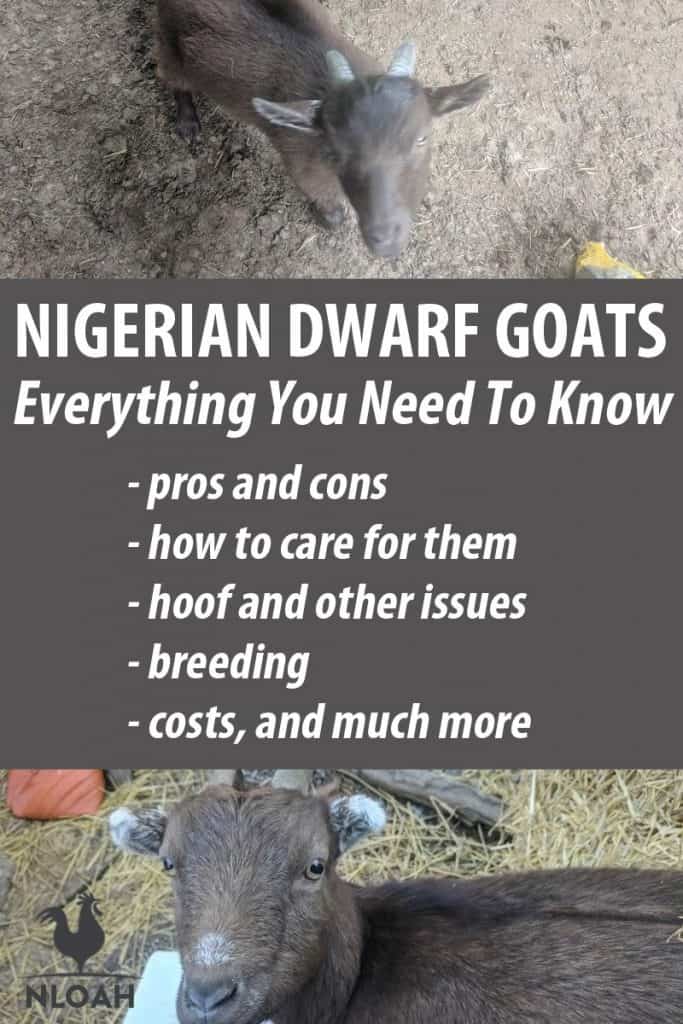

Tara lives on a 56 acres farm in the Appalachian Mountains, where she faces homesteading and farming challenges every single day, raising chickens, goats, horses, and tons of vegetables. She’s an expert in all sorts of homesteading skills such as hide tanning, doll making, tree tapping, and many more.

I’m curious…I’ve built a “barn/shelter” for goats I plan on getting in the spring of 2023, next up is building fencing for pen are. What type of “bedding” do you use or recommend for inside the sleeping areas and kidding stalls? I use premium wood chip (in white bag) from Tractor Supply for my chickens and ducks, would that be suitable bedding for the goats? I’m planning on getting two does possibly young ones already bred so I’ll be able to milk them shortly after birthing.
2’6″ for a fence. Hum, 4′ minimum, and even then you’ll wish it was higher.
If it don’t hold water, it won’t hold a Nigerian dwarf goat.
But was a nice article.
How can you tell if your goat has dangerous bloat vs. being overweight? I’ve had to travel a lot in the past year and house-sitters have, on occasion overfed them good food. Not bad snacks as far as I know. They’ve put on weight here this summer because they’ve been less active due to heavy monsoon season.
Your notes say “A goat with bloat will need to be given a drenching formula and have the sides (and only the sides) of its belly gently rubbed to help break up the hard and large gas bubble that has caused it to swell.”
Can you say more about this? Especially, you emphasize to rub the formula only on the sides of the belly. I’m not sure where the side stops and belly begins or how dangerous it is to get it on the belly. Where can I get drenching formula and can it hurt the goat if there is not bloat?
The formula is not rubbed on the goat. It is given to the goat with the help of a drenching tool. The formula goes down the throat with the aid of the tool. Then you gently massage the sides of the goat to help break up the gas bubbles. google “drenching tool”.
How old do young does have to be to breed
Males reach sexual maturity when they are only three to four months old.
Female goats are not ready to reproduce until they are seven to eight months old.
I always wait until the doeling is a minimum of10 months of age (preferrable 1 year) so that she has matured enough to be able to keep the stress of pregnancy at bay. That way the babies are born after the age of one year.
I am disabled and want a really small goat and this breed appears to be right for me. I want it for milk/cheese. It would have to be in a pen however. I live in the city. I will provide it with something to jump on, a tunnel to occupy itself, but I don’t have the land for two. I am working on a chicken coop soon. I want it to be happy above all things, would it be if I don’t have two? ty
try making a multi level pen they don’t the best on their own
Goats are pack animals and so you would need at least 2.
Most prefer a companion
Keep in mind that your doe has to get pregnant and give birth in order to produce milk. So if you don’t keep a buck, find a buck that you can take your doe to in order to be bred.
Not necessarily. I had a Niggie – female – and her sister – no breeding – no males, and the first one lactated and gave the most wonderful milk. I learned to make cheese, too, When she passed, the second goat – her sister – also became a milker. There is a name for this condition, but I forget what it is. Great experience. I live in area that doesn’t accept farm animals. I miss them!
This quote is not true! – “These goats will not be able to climb a fence that is taller two to two and a half feet tall – making fence purchasing less expensive and time-consuming.” I’ve been raising purebred Nigerian Dwarfs for over 10 years and some have no problem eyeing up a 4-foot fence and jumping over it. They have run up my fence and over or on an angle across to get over the 4-foot stock fence. I even had one that would run and bounce off the
corner to the connecting corner and run up and over my chain link 4-foot
fence.
I was thinking this may not be correct too. Unless our 1 month kid is a super goat! ? She is already jumping from off the ground at a dead stop at least 1 to 1 1/2 feet if not more. This girl can jump & run faster then I ever dreamed they would. I hate to see how high she can jump at 6 months old.
How well do they handle the cold?
These miniature goats are hardy animals and can not just survive, but thrive in nearly any type of climate.